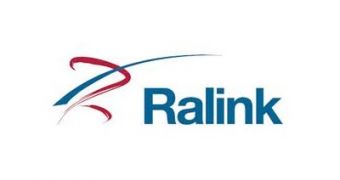Whenever a company manages to create a product that is the first in the world to accomplish a certain feat, one can be sure that a suitably praise-filled press release will be made, and this is exactly what Ralink Technology Corporation did, not long ago.
Ralink announced that it created the RT65168 VDSL2/ADSL2+ processor, described as the world's first VDSL solution to achieve a certain set of goals.
For one, it support the VDSL2 30a profile, which delivers upstream/downstream throughput of up to 100 Mbps.
The second is that ADSL fallback is supported, ensuring backward compatibility. Thirdly, the chip can be used on 2-layer boards.
By means of explanation, Ralink implemented a 32-bit MIPS 34Kc CPU and a VDSL Discrete Multi-Tone (DMT) engine, in addition to support for all VDSL/ADSL profiles on a cheap 2-layer PCB (when the RT65168 is paired with RT63095, Ralink’s VDSL2 Analog Front End (AFE) chip).
The affordable 2-Layer boards are also usable for VDSL/ADSL routers, Ethernet bridges and residential WiFi Gateways, plus Intelligent Access Devices (IADs).
Another feature supported is a discrete multi-tone modulation technology that complies with xDSL standards defined by ANSI (the American National Standards Institute) and ITU-T (the International Telecommunication Union standards body).
“As the boundaries separating broadband voice, video, and data service blurs, carriers face severe competition to attract and retain new customers,” said Bomin Wang, General Manager of Ralink Technology’s Broadband Business Unit.
“Ralink’s new RT65168 leverages enhanced compression algorithms along with standards-based VDSL2 technology that delivers up to 100 Mbps of symmetric bandwidth over existing copper networks.”
“This cutting-edge solution enables our customers to remain competitive with competing broadband technologies, while also allowing carriers to attract potential customers with advanced services like video on demand (VoD) and high definition IPTV,” Wang concluded.
The product is meant to let carriers offer data services, voice and video at speeds on par with fiber-to-the-home (FTTH) but better price-to-performance ratio.

 14 DAY TRIAL //
14 DAY TRIAL //